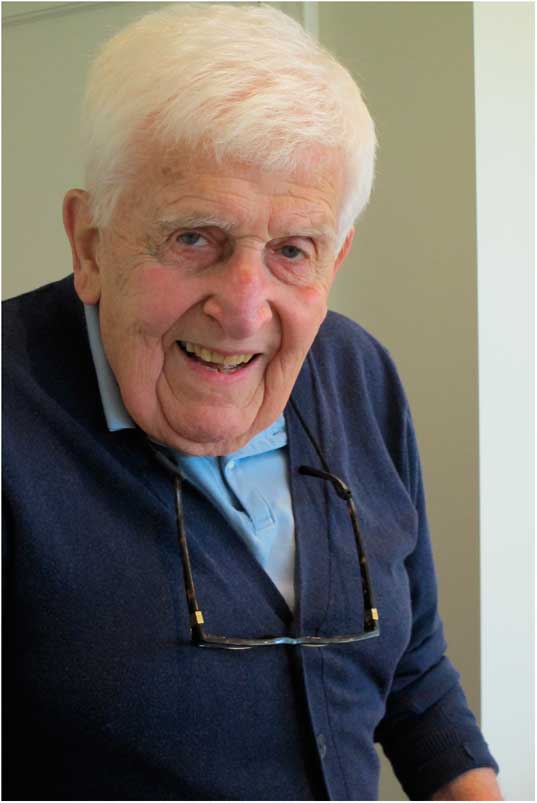Joe Marotta’s early travels were involuntary. He was born in Niagara Falls, New York, of Canadian immigrant parents. At the age of two years, he was carried across the Ambassador Bridge to Canada. He grew up in Northern Ontario as “a little Italian boy from Sudbury,” as he proudly described himself. There he excelled at school, helped his mother at her confectionary store, and was the responsible big brother to Fred, Bill, and Frank.
He graduated with an MD from the University of Toronto in 1949, followed by a rotating internship in internal medicine at St. Michael’s Hospital in Toronto. Then he became a junior, senior, and chief resident in neurology at the Neurological Institute of New York under the legendary Houston Merritt. He went on to London (England), where he studied at the Maudsley Hospital and Queen Square Hospital for Nervous Diseases. With these transatlantic experiences, he combined the American and British approaches to neurology and melded them into his own unique Canadian style. He understood both the importance of clinical skills as well as having a respect for the developing technology in neurology.
In 1956, he returned on staff to his beloved St. Michael’s Hospital with a concomitant academic appointment at the University of Toronto. His career grew academically and administratively. He became Professor of Medicine and Physician in Chief at St. Michael’s from 1969 to 1979, and subsequently Associate Dean of Clinical Institutional Affairs in the Faculty of Medicine at the University of Toronto.
He excelled as a skilled diagnostician, a wonder to observe as he took a history and carried out a neurological examination. The patients were always aware that they were the center of his attention, and one of his great clinical skills was to relate to his patients with charm and humor. They also knew he would explain their situation and always tell them the truth.
Throughout his career, he had a large clinical practice that persisted long after he retired from the university. He practiced until he was 88 years of age.
His honors include membership in the Alpha Omega Honor Society. He received the Queen’s Canadian Silver Jubilee medal, and the Squires Award for Distinguished Performance by an individual in their chosen field, selected by his peers. The New Ambulatory Care Center at St. Michael’s Hospital was named for him. The Division of Neurology at the University of Toronto established their teaching award and entitled it the “The Marotta Award.” One of the most moving recognitions for Joe came as an invitation to participate in the “National Conference on Emigration: The Italians in the World” held in Rome in 1988, topped by an audience with His Holiness Pope John Paul II. It is hard to imagine a greater thrill for the once “little Italian boy from Sudbury!”
Parallel to his academic career, he, with his adored Margaret (“Peg” née Hughes) raised a family of 10 children. At the same time, he was attracting students and trainees and also generating an academic and clinical family based on his extraordinary attributes as a teacher. Based on is reputation, one of us (VH) traded his second six months as Chief Resident of Neurology at the University of Toronto for a rotation at St. Michael’s Hospital with Joe. Another (TJM) applied for a year in Toronto after Queen Square, on the condition that at least six months could be with Joe. Neurosurgeons like Harley Smyth were also drawn to his teaching, and the neurology and neurosurgery residents covered both services, providing a much wider experience.
A special treat of the rotation was to hear cases discussed by Joe, who never lost his penchant for plain talk, for humor, and his skill at getting to the core of a problem, and Henry Berry, his successor as Head of the Division of Neurology, who with his polysyllabic grandiloquence provided learned variations of Joe’s main theme.
Joe was caring, understanding, and tolerant. He had great stories and jokes that we still retell. But he could show the forceful side to his personality if an administrator or the system was doing something that adversely affected patients.
He leaves his wife of 63 years, Peg, 10 children, one of whom is a doctor, who in turn has a son who is a doctor, 20 grandchildren, generations of clinical neurologists and neurosurgeons who learned so much from him, and many thousands of grateful patients.
We will miss his robust, positive presence and his zest for life. When we will think of Joe, we will smile gently—in remembrance.

Joe at his 90th birthday. Courtesy of Margaret Marotta, his daughter.
Disclosures
Vladmir Hachinski and T. Jock Murray hereby state that they have no conflicts of interest to disclose.
Vladimir Hachinski Department of Clinical Neurological Sciences Western University, London, Ontario, Canada
T. Jock Murray Division of Neurology, Dalhousie University Halifax, Nova Scotia, Canada


